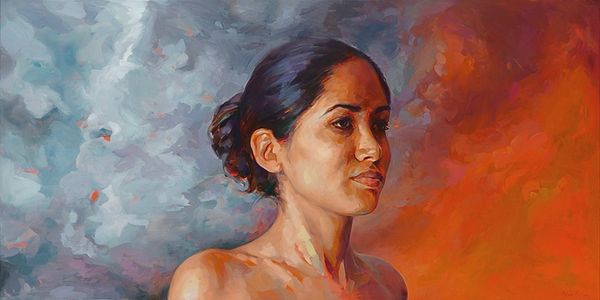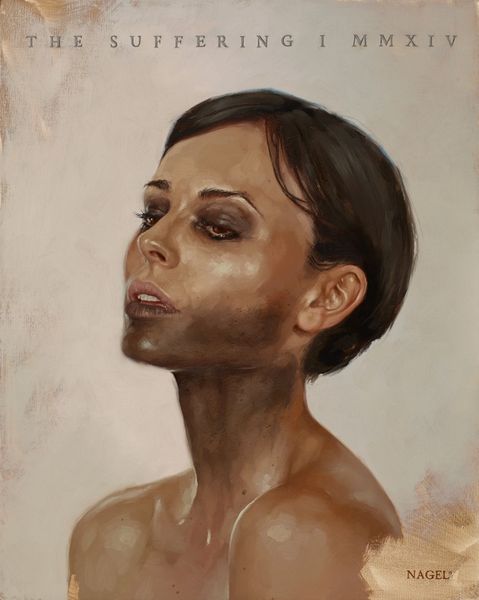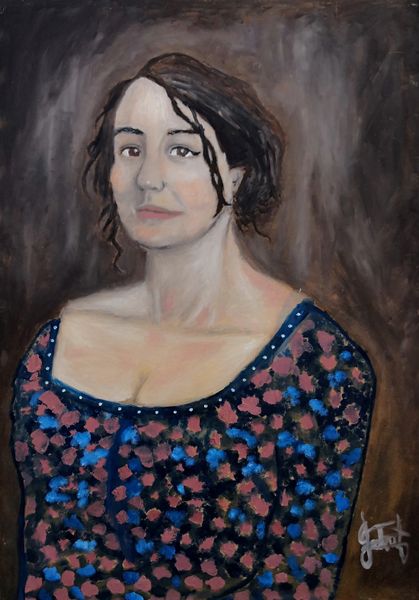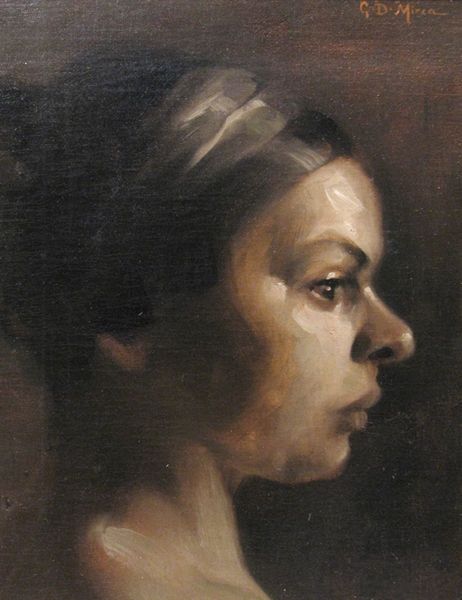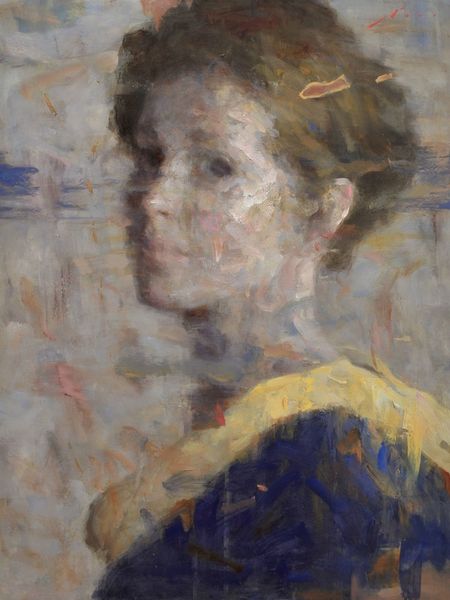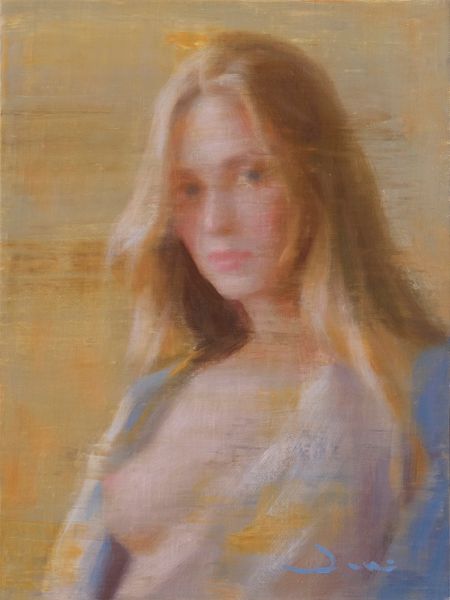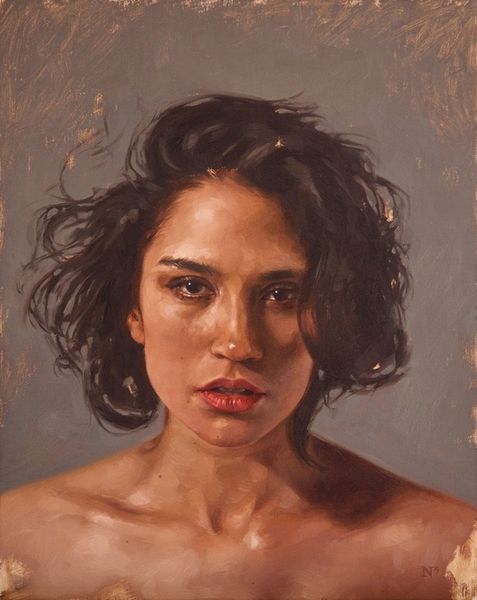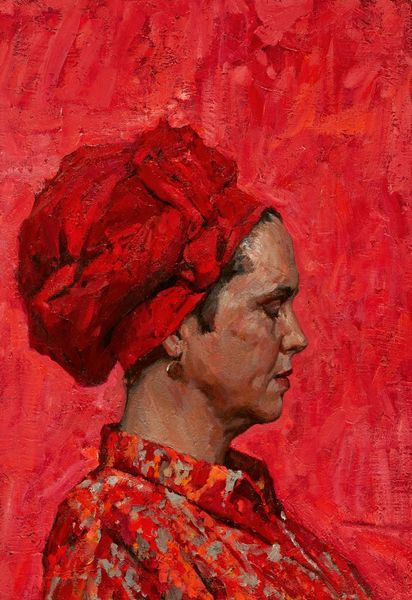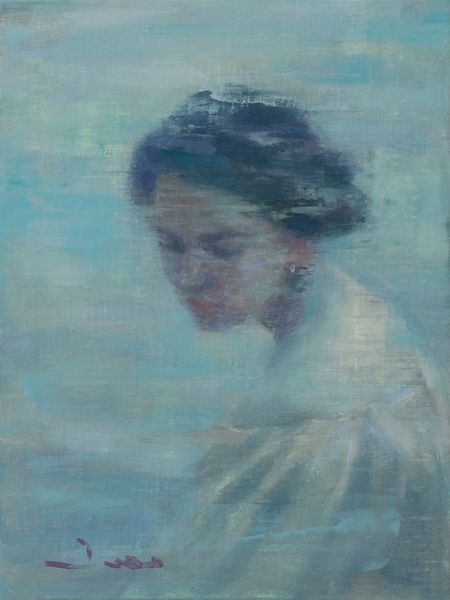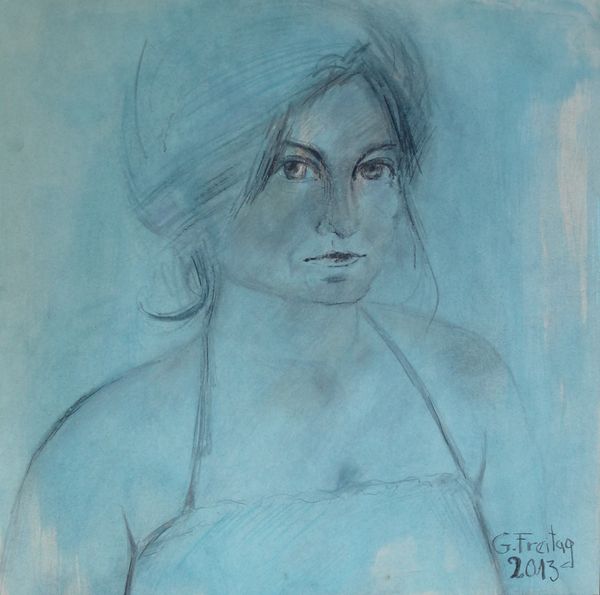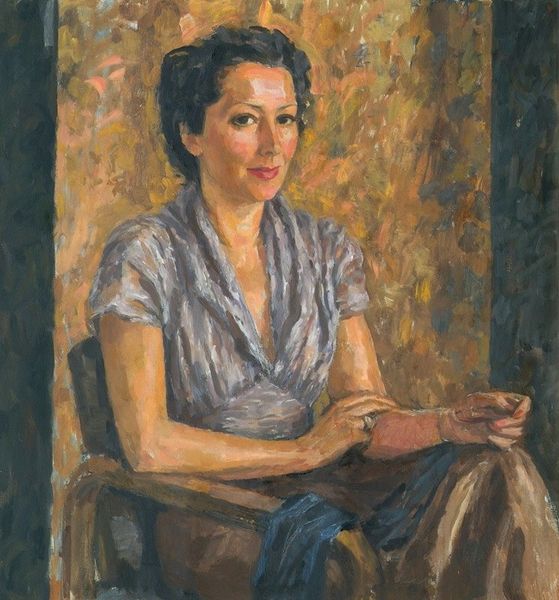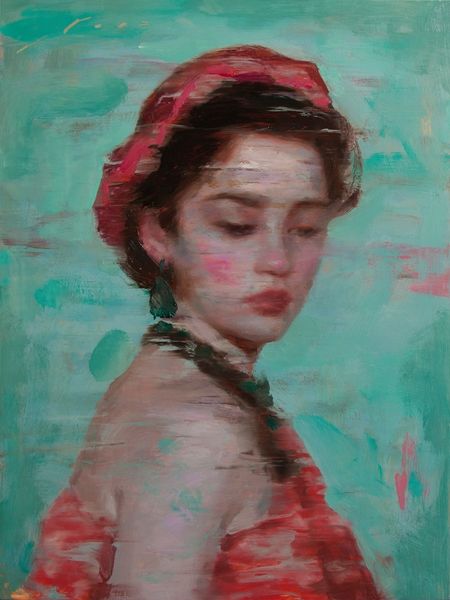
oil-paint, impasto
#
portrait
#
oil-paint
#
figuration
#
oil painting
#
impasto
#
portrait drawing
#
portrait art
Copyright: Barrington Watson,Fair Use
Curator: The artwork before us is entitled "Tamika," a compelling portrait executed in oil paint by Barrington Watson. Editor: There’s a wistful quality that emanates from this painting. A delicate balance of somber reflection with an undeniable air of dignified composure. The sitter's gaze suggests both vulnerability and strength. Curator: Note the impasto technique, particularly evident in the handling of light across the planes of her face. Watson's manipulation of texture gives a palpable sense of volume. Observe how the artist employs a relatively limited palette, achieving subtle gradations and remarkable depth. Editor: Indeed. It is also compelling how Watson subtly infuses the work with nuances related to the complexities and representations of Black women—this approach invites consideration around agency and self-representation, moving beyond simply objectifying the sitter. The choice of color is carefully implemented, contributing to the subject’s character and historical placement. Curator: Agreed. The restrained color scheme serves not only aesthetic purposes but also guides our eye, drawing our attention to key elements, most notably the elegant slope of her neck, the set of her mouth and the contemplative sidelong glance that encourages both sympathy and deference. Editor: Exactly. The way she isn't offering a direct gaze makes us, as viewers, collaborators. In terms of technique, consider how the softness in the background focuses our attention on the nuances of her face. Every brushstroke seems weighted, suggesting intention behind its form and texture and leading viewers to reconsider their perceptions. Curator: This is not merely an exercise in rendering likeness, but one in eliciting affect and in calling forth careful formal analysis of line, colour and tone, leading the viewer towards fuller aesthetic understanding. Editor: Absolutely, and further encouraging viewers to confront ingrained power dynamics and foster more profound societal discussions about selfhood, historical context, and human dignity. It challenges norms within portraiture, offering a resonant dialogue across past, present and future—creating spaces that facilitate true understanding of what we each perceive, feel, and know. Curator: The ability of artworks such as this, as both image and social construct, is vital when teaching future generations to observe mindfully and question ceaselessly. Editor: Well said. This work definitely provides both a captivating viewing experience while creating space to challenge preconceptions.
Comments
No comments
Be the first to comment and join the conversation on the ultimate creative platform.
